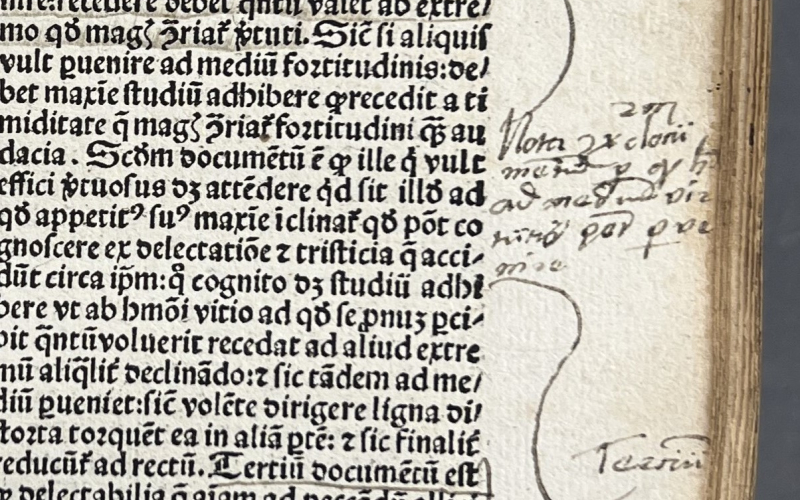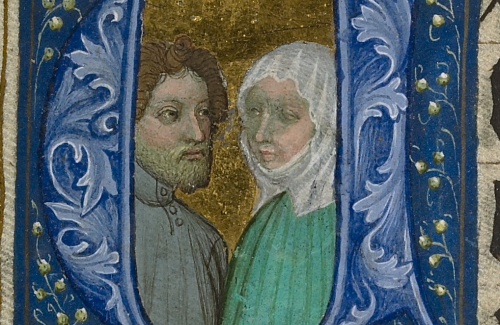#14 Annotated book
Now, we realise most readers treat library books with the respect and care they deserve, and wouldn’t dream of writing in them, folding down corners or leaving sticky notes all of them (YOU KNOW WHO YOU ARE).
But when it comes to personal copies of books, some people really like to leave their own mark. Everywhere.
1. This heavily annotated book is actually three volumes bound together. The first two are the works of Nicolas D’Orbellis, printed in around 1503. The third is earlier, around 1500, and is Aristotle’s Ethics as translated by Petrus Tartaretus.
2. Nicolas D’Orbellis was a student of the philosophy of John Duns Scotus, who lived from about 1400 to 1475. His main works are commentaries or explanations of Duns Scotus’ philosophy, as can be found here.
3. Petrus Tartaretus was also a ‘Scotist’, working in the same period. Very little is known about him, although a fragment of a flyer advertising a lecture he was giving in Paris has also been found.
4. The text of Aristotle was what would have lead Prof Chandler to purchase this book in 1853. As far as we are aware, this is the only surviving copy of this text.
5. The printer of the Tartaretus is Gaspard Philippe, known to be working in Paris in the period. However, it seems he borrowed some capitals from a neighbour, as some of them are by Michel Tholoze and can be seen in Tholoze’s other work.
6. All the books are annotated throughout, with notes, commentaries and summaries of what is to be found in the text, as well as scribbles and doodles.
7. The small pointing hand known as a manicule was often also used in manuscripts to indicate important passages.
8. Both the front and back inside covers are heavily annotated. There seem to be notes on the text and author over both of them.
9. The front page also has the names of various owners. New owners would scratch out previous names to indicate ownership.
10. The binding is the original wooden board with a half-covering of pigskin. Someone has inscribed a set of concentric circles into the wood of the front.

